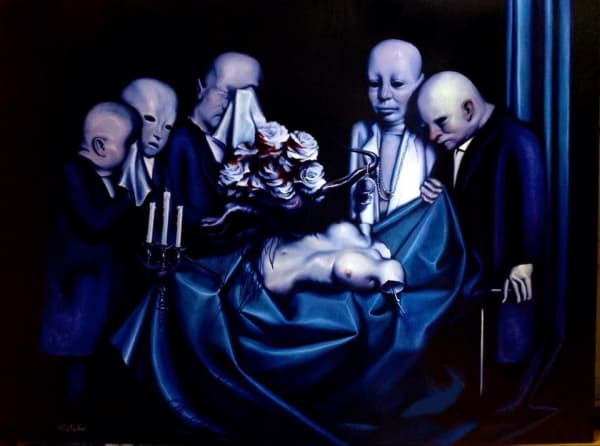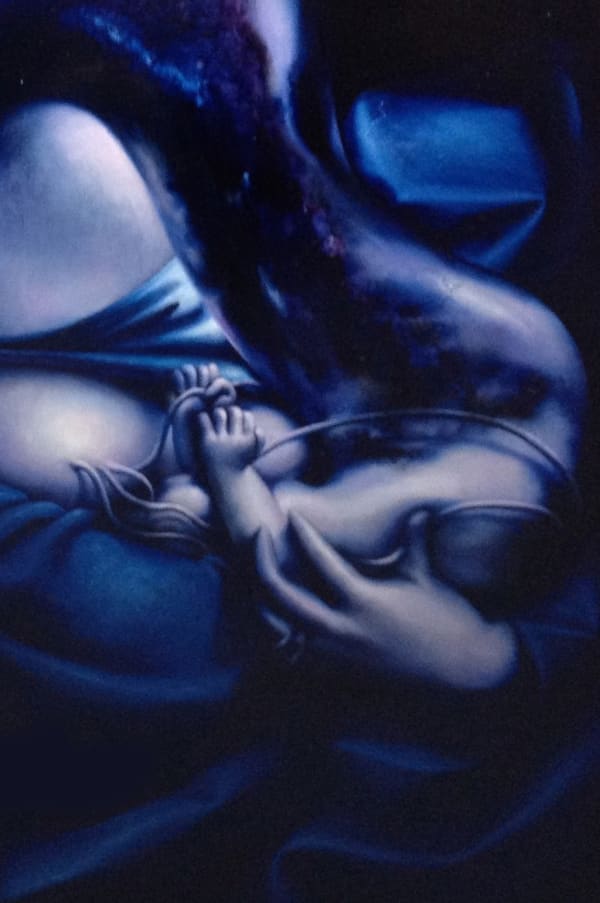Wang Jiaxue: Tired Romantic
Wang Jiaxue spent her last year in the ‘New Classicism’ studio under the direction of Liu Renjie. Her work is the result of an exacting technique, intense concentration and a morbid imagination. Wang’s canvases look like they could’ve been unearthed from the Middle Ages with their gothic imagery, and smoothly varnished, eggshell like finishes. Over the last two years Wang’s work underwent a curious transformation both stylistically and thematically. Here we have chosen examples that trace this process. Two years ago Wang’s work was small in scale and stylistically inflected by an Edward Hopper-esque play of light and bulbous forms. The early work’s almost cute first impressions helped to mask an enigmatic and sinister underlining. In Where are you? we see an entranced hypothetical space. A stairwell lit only by streetlights is unveiled behind long red curtains that run the length of the canvas. Slowly descending the stairs and emerging from the shadows are two legs dragging behind the remainder of a nude figure that is still subsumed by the shadow. Wang’s palette remains constant as she advances into more technically and thematically challenging work. Blood reds, and vein-like blues help to articulate her characters, which are almost always placed on a bed of shiny deep black. In the later work her draftsmanship intensifies to an almost mannerist-like realism and a blob-like apparition makes several appearances. We first see it in Evolution then later in Anonymous and others. How we interpret these forms, either as serpents, sea life, viscera, or as an abstract reflection of our deepest fears is up to the viewer. Either way these slimy beings are confrontational, a reminder of our own weakness for the unfamiliar. The dark narratives that run through Wang’s exquisitely crafted work border on the biblical. In Happiness and Joy we see a blasphemous, nouveau riche couple transformed into monsters by their own gluttony. The scene is at once a surreal extension of the Vanitas tradition with its obsession with death, consumption, and cessation as well as a prophecy for modern times. In Machine 1 a naked young boy, painted in a spooky but stunning chiaroscuro, is alarmed by his arm that has fallen off to reveal a mechanical core. In these paintings there is not only a personal psychological dynamic at work but also that of a collective psyche as well. Not only is the psychological fabric of society starting to tear in China but also the physical composition too. Buildings and bridges are toppling at the same rate that environmental pollution is engulfing what little remains of a natural habitat. For a nation that has done too much too fast without any moral fiber to keep it intact Wang’s work resonates with a certain prophetic noise.
Test/Mathieu Borysevicz









